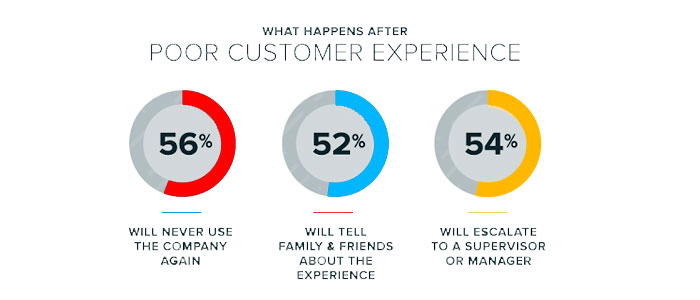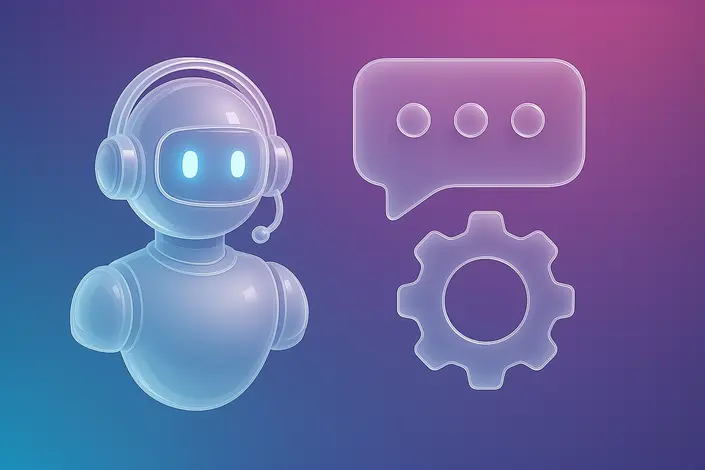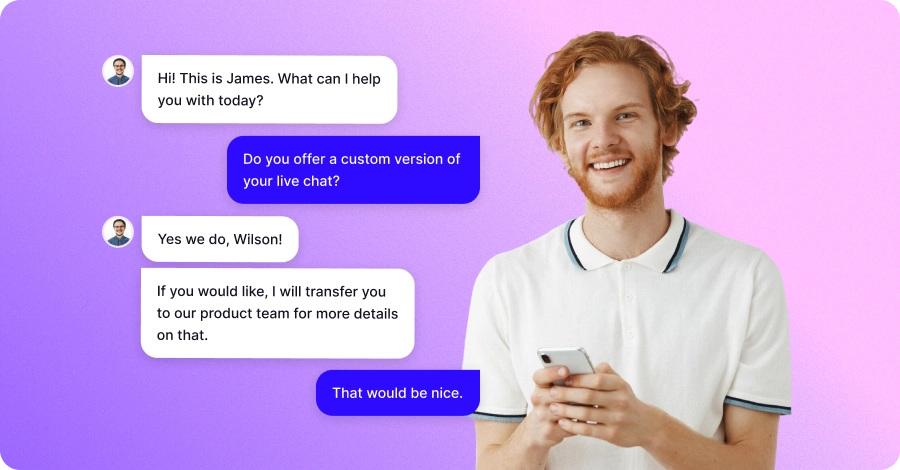15 Examples of Bad Customer Service & Ways to Fix Them
- December 9, 2020
- 12 mins read
- Listen

Do you know that bad customer service can have far-reaching consequences for businesses? It affects everything from revenue and reputation to employee morale and regulatory compliance. When customers encounter rude staff, long wait times, or ignored complaints, it not only damages their perception of the company but also undermines trust and loyalty.
In this article, we’ll explore the detrimental effects of poor customer service, provide examples, and provide insights into how businesses can mitigate these risks to foster positive customer experiences and sustainable growth.
What Is Bad Customer Service?
Bad customer service can be defined as when a business fails to meet customer expectations regarding service quality, response time, or overall customer experience. The factors that hurt customer service are inefficient support staff, a lack of real-time support, or an inability to understand your customer’s needs.
Poor customer service not only worsens existing customer relationships but also endangers potential opportunities and obviously erodes the bottom line of your business. Research by Microsoft states, “58% of consumers choose to switch companies because of poor customer service experience.”
Good Customer Service Vs Bad Customer Service
| Good Customer Service | Bad Customer Service |
| Responding quickly to a customer’s questions, issues, and feedback is essential to providing good customer service. | Bad customer service often involves delayed or non-responsive interactions, leaving customers feeling ignored or undervalued. |
| Good customer service really speaks for itself. It is when you answer one of the top customer experience questions to deliver a higher level of satisfaction offered by the company. | Bad customer service results in clients’ dissatisfaction and a negative customer experience. |
| They actively work to resolve customer issues. | When customer concerns are not effectively addressed or resolved, it causes disloyalty |
| Customers are treated with empathy in good customer service. | Unwillingness to assist can frustrate customers. |
| Customers can receive accurate information and helpful support from good customer service personnel. | Rudeness, impatience, or insulting language, can give customers a bad opinion of the business. |
How Does Bad Customer Service Experience Affect Your Business?
According to the report by WalkerInfo, customer experience will outshine price and product as the key brand differentiators by 2024. The customer experience (CX) continues to be a decisive factor for many customers. Businesses need to understand how a poor service experience would impact their overall brand.

Here are the consequences of bad customer service:
- Lost Revenue: Customers who experience poor service are less likely to make repeat purchases or recommend the business to others. It results in lost sales opportunities.
- Damage to Reputation: Negative experiences shared by dissatisfied customers can tarnish the company’s reputation which leads to a loss of trust and credibility in the market.
- Increased Churn Rate: Customers may choose to switch to competitors who offer better service and leading to higher churn rates and decreased customer loyalty.
- Negative Word-of-mouth: Dissatisfied customers are more likely to share their experiences with friends, family, and online communities. It spreads negative word-of-mouth and potentially deters new customers.
- Decreased Customer Lifetime Value: Poor customer service can reduce the lifetime value of customers as they may spend less over time or disengage from the brand entirely.
- Legal Issues: In extreme cases, unresolved customer complaints or disputes can lead to legal action or result in costly litigation and damage to the company’s reputation.
- Employee Dissatisfaction: Constantly dealing with unhappy customers can take a toll on employee morale and job satisfaction. It inspires higher turnover rates and decreased productivity.
- Missed Opportunities for Improvement: Negative feedback from customers provides valuable insights into areas where the company can improve its products, services, and processes. Ignoring or dismissing this feedback can hinder growth and innovation.
- Impact on Brand Image: consistently bad customer service experience can erode the brand’s image and values, making it difficult to attract and retain customers who align with its ethos.
- Increase Churn Rate – When you deliver a great experience, customers will return to you, and on the contrary, substandard service will encourage them to churn. A single instance of bad customer service is enough to make you switch to a new company.
- Higher Customer Service Costs– Acquiring a new customer can cost five times more than retaining an existing one. When customer service standards decline, the number of touchpoints increases, which has a drastic impact on customer service costs.
15 Examples of Bad Customer Service & Ways to Fix Them

What are the reasons that may label businesses with the worst customer service experience tag? Now, let’s take a look at the 15 worst customer service examples and ways to fix them all.
1. Ignored Complaints
A customer repeatedly contacts the company’s customer service department to report a defective product they purchased. Despite multiple attempts, the customer receives no response or acknowledgment from the company. The lack of communication leaves the customer feeling frustrated and ignored, ultimately damaging their trust in the company.
How to fix it?
- You’ll have to ensure that there is a clear and efficient system for logging and addressing complaints promptly.
- You can use the automated acknowledgment emails or messages to reassure customers that their concerns are being looked into.
2. Long Wait Times
When customers call the company’s helpline for assistance, they are greeted with lengthy wait times before reaching a representative. Some customers report waiting on hold for hours, listening to repetitive hold music and automated messages. This prolonged waiting period not only wastes the customer’s time but also adds to their frustration and impatience.
How to fix it?
- You should invest in additional customer service representatives during peak hours and offer alternative contact methods like live chat or callback options.
- Try to implement a call-queuing system with estimated wait times to manage customer expectations.
3. Rude Staff
Customers interact with customer service representatives who display rude or disrespectful behavior. Instead of being greeted with professionalism and courtesy, customers encounter dismissive attitudes, condescending remarks, or even outright hostility from the staff. Such behavior leaves customers feeling disrespected and undervalued by the company.
How to fix it?
- You need to provide comprehensive training on empathy and effective communication techniques.
- You’ll have to implement quality assurance measures, such as call monitoring, to identify and address inappropriate behavior promptly.
4. Incorrect Billing
Despite being charged incorrectly for their purchases, customers encounter difficulties when attempting to resolve billing issues with the company. Customer service representatives may lack the necessary skills or authority to address billing discrepancies effectively. As a result, customers face prolonged delays, repeated requests for information, and frustration in their efforts to rectify the situation.
How to fix it?
- Conduct regular audits of billing processes to minimize errors.
- Empower frontline staff to issue refunds or credits without unnecessary bureaucracy and provide comprehensive training on billing procedures.
5. Lack of Product Knowledge
When seeking assistance with a product or service, customers are met with customer service representatives who lack adequate knowledge or understanding of the company’s offerings. Your customer service representatives may struggle to answer basic questions about product features, troubleshooting procedures, or warranty information, leaving customers feeling frustrated and underserved.
How to fix it?
- You can conduct ongoing training programs to ensure staff are well-versed in all products and services.
- Create easily accessible resources like knowledge bases or FAQs to assist staff in finding accurate information quickly.
6. No Follow-Up
Despite assurances from customer service representatives that their concerns will be addressed or that they will receive a callback with a resolution, customers never hear back from the company. When the follow-up promises are not fulfilled. It leaves the customers feeling abandoned and distrustful of the company’s commitment to resolving their issues.
How to fix it?
- You can use a robust customer relationship management (CRM) system to track customer interactions and follow-ups.
- Set clear expectations for follow-up procedures and ensure staff are accountable for delivering on promises.
7. Refusal to Refund
Sometimes, customers encounter resistance or outright refusal when attempting to obtain a refund for a faulty or unsatisfactory product. Despite providing valid reasons for their request, such as receiving a defective item or experiencing poor service, the company’s policy or representatives refuse to accommodate the customer’s refund request. It often leaves them feeling frustrated and unfairly treated.
How to fix it?
- You should often review refund policies to ensure they are fair and customer-friendly.
- Empower staff to make exceptions when warranted and provide clear guidelines on when refunds should be issued.
8. Hidden Fees
Customers discover unexpected charges or fees on their bill that were not disclosed upfront at the time of purchase. Despite expecting to pay a certain amount for a product or service, customers are surprised to find additional costs, such as hidden fees, taxes, or surcharges, which were not clearly communicated by the company. This lack of transparency leaves customers feeling deceived and distrustful of the company’s pricing practices.
How to fix it?
- You must clearly disclose all fees and charges upfront during the purchasing process.
- Provide detailed breakdowns of costs and be transparent about any potential additional charges.
9. Poor Communication
Customers experience confusion and frustration due to inconsistent or contradictory communication from the company’s customer service department. Different representatives may provide conflicting information or instructions regarding the resolution of a customer’s issue. It often leads to further uncertainty and delays in resolving the problem.
How to fix it?
- You should always try to implement standardized communication protocols to ensure consistency across all channels.
- Don’t forget to provide comprehensive training on effective communication techniques and encourage active listening skills.
10. Outdated Systems
Customers encounter technical difficulties when attempting to interact with the company online or through its website. For example, the website may be slow to load, unresponsive, or prone to crashing, making it difficult for customers to place orders, access account information, or seek assistance.
These outdated systems hinder the customer experience and reflect poorly on the company’s commitment to technology and innovation.
How to fix it?
- You should not delay investing in upgrading or replacing outdated systems to improve website performance and reliability.
- Conduct regular maintenance to prevent crashes and downtime during peak periods.
11. Overpromising, Underdelivering
Customers are given unrealistic expectations or promises by customer service representatives regarding the resolution of their issues. For example, representatives may assure customers of a quick resolution or delivery timeframe that ultimately fails to materialize. This discrepancy between expectations and reality leaves customers feeling disappointed and let down by the company’s inability to deliver on its promises.
How to fix it?
- You always have to set realistic expectations with customers and ensure staff are trained to provide accurate estimates of resolution times.
- Communicate any delays promptly and offer proactive solutions to mitigate the inconvenience.
12. Lack of Empathy
Customers feel that their concerns are not being heard or understood by customer service representatives who lack empathy or compassion. Instead of acknowledging the customer’s frustration or dissatisfaction, representatives may adopt a cold or indifferent demeanor, making customers feel unimportant and disregarded by the company.
How to fix it?
- Foster a customer-centric culture within the organization, emphasizing the importance of empathy and understanding.
- Provide ongoing training and reinforcement on the value of empathy in customer interactions.
13. Pushy Upselling
Instead of focusing on addressing the customer’s immediate concerns or issues, customer service representatives prioritize upselling additional products or services. For example, representatives may pressure customers to purchase upgrades, add-ons, or extended warranties rather than focusing on resolving the customer’s existing problem. This aggressive sales approach leaves customers feeling pressured and disrespected by the company’s priorities.
How to fix it?
- You can encourage a consultative approach to sales that focuses on identifying customer needs and providing solutions.
- Provide incentives for staff to prioritize customer satisfaction over sales quotas.
14. Inadequate Training
If the customers interact with customer service representatives and notice they lack the necessary training or expertise to assist them effectively. Representatives may struggle to navigate the company’s systems or policies, leading to confusion, errors, and frustration in their interactions with customers. This lack of training reflects poorly on the company’s investment in its employees and their ability to deliver quality customer service.
How to fix it?
- You need to focus on comprehensive training programs that cover not only product knowledge but also customer service skills and problem-solving techniques.
- Provide ongoing support and resources for continuous learning and development.
15. Blame Game
Instead of taking responsibility for mistakes or shortcomings, customer service representatives deflect blame onto the customer. For example, representatives may accuse customers of not following instructions, misunderstanding policies, or causing their own problems rather than acknowledging the company’s role in the situation. This refusal to accept accountability leaves customers feeling frustrated and unfairly treated by the company.
How to fix it?
- You should build a culture of accountability within the organization, where staff members take ownership of customer issues and work collaboratively to resolve them.
- You can provide training on conflict resolution and problem-solving techniques to empower staff to handle challenging situations effectively.
Conclusion
Bad customer service is detrimental to any business. However, if your business is customer-centric, delivering a better customer experience becomes the ultimate objective for your organization. By becoming CX’s first brand, you not only eliminate the negative impact of customer service. Also, build lifelong customer relationships and brand loyalty.
REVE Chat provides an automated customer service platform that allows your business to deliver real-time sales/support assistance. Sign up today and empower your support team to deliver a great customer service experience.
Frequently Asked Questions
Bad customer service occurs when a business fails to meet expectations in quality, response time, or experience, often due to inefficient staff, slow support, or unmet needs.
It leads to lost revenue, damaged reputation, higher churn rates, negative word-of-mouth, and increased costs, with 58% of consumers switching companies due to poor service.
Examples include ignored complaints, long wait times, rude staff, incorrect billing, and lack of product knowledge, all frustrating customers and eroding trust.
Solutions include prompt complaint handling, reducing wait times with live chat, training staff in empathy and skills, ensuring billing accuracy, and upgrading outdated systems.
Fixing it prevents revenue loss, boosts loyalty, and enhances reputation, as customer experience is a key differentiator, outshining price and product by 2024.



